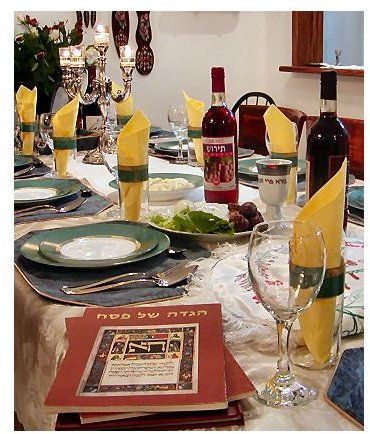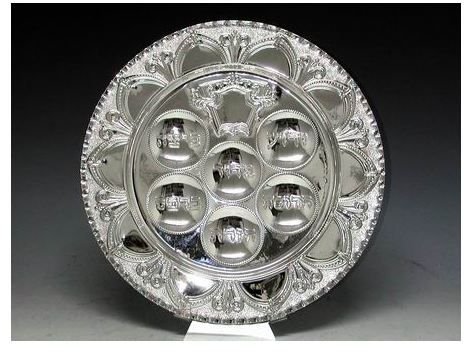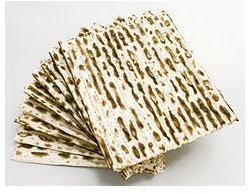Learn About the Jewish Festival of Freedom: the Passover Seder
Historical Background
Passover has a historically based background for the people of Jewish faith when it comes to Passover, or Pesach, in the Jewish religion. Often erroneously called the “Jewish Easter” because Passover takes place in spring, this misnomer points up the fact that like Hanukkah is not a “Jewish Christmas,” neither is Passover affiliated with Easter. But the “Last Supper” for Christians is also identified as a Passover meal and the only connection between the two feasts, is the word etymology of the Romance languages: Pascua in Spanish, Pacques in French and Pasqua in Italian.
Although Passover is a spring festival in many ancient religions, for Jews it commemorates the release of the Israelites from the Pharaoh’s bondage due to the ten calamities imposed upon Egypt by Yahweh; the actual linguistic term has its roots in the fact that on the night He slew Egypt’s first born, there was divine intervention and God’s angel “passed over” the homes of the Jews because each family slew a paschal lamb and sprinkled its blood on the doorposts—and the destroying angel passed over.
The Ritual

The event begins the 8-day-long memorial from the 14th Nisan (March/April) with a meal referred to as Seder, which means, “Order.” This reunion of the family serves to remind the younger generation about the Jewish struggle, and the meal begins with the Exodus recounting read from the Haggadah. The youngest son in the family initiates a scriptural question-and-answer session in concert with traditional foods of symbolic importance.
“And you shall tell it to your son on that day, saying, ‘Because of this God did for us when He took me out of Egypt.’” (Exodus 13:8)
The Foods

For you here, the meal signifies:
• Matzoth or unleavened flat bread (seen at right) is to remind participants of the bread the Hebrews hurriedly took with them on the departure or Exodus from Egypt.

• Bitter herbs represent the bitterness of bondage.
• Roasted lamb is offered to remind the faithful of the sacrificed blood that the Hebrews were instructed to smear on their doors as a sign to the angel that they should be spared.
• Haroseth, a mixture of apples, nuts and wine symbolizes the clay the Jews used to make bricks for the Pharaoh.
• Wine accompanies the meal, and a symbolic cup is set aside for the prophet Elijah—tradition says his appearance will portend the coming of the Messiah.
There are also games and activities for the children to remind them of Passover Seder and its meanings.
Reference & Resources
Judaism 101: Pesach Passover https://www.jewfaq.org/holidaya.htm
Chabad.org https://www.chabad.org/holidays/passover/default_cdo/jewish/Passover.htm
Image Credits:
• Passover Seder table: https://commons.wikimedia.org/wiki/File:PikiWiki_Israel_3137_Passover_Seder_Table.JPG
Wikimedia Commons/CC-BY-2.5
• Another table photo (more colorful): https://commons.wikimedia.org/wiki/File:Pessach_Pesach_Pascha_Judentum_Ungesaeuert_Seder_datafox.jpg
Wikimedia Commons/By datafox (Own work) [GFDL
• Seder Plate: https://commons.wikimedia.org/wiki/File:SederPlate.jpg
Wikimedia Commons/hadadbros.com CC-BY-SA-2.5-il
• Matzoth bread: https://commons.wikimedia.org/wiki/File:Stack_of_Matzoth_from_kosherstock.jpg
Wikimedia Commons/ Kosherstock [GFDL]
This post is part of the series: Curious Customs: Stories Behind Popular Holidays
We take holidays for granted in that we celebrate them according to tradition, but where did the tradition come from? Why do we buy a Christmas tree? Why are hearts popular on Valentines? What is the reason we decorate pumpkins for Halloween? Find out in this series.
- The History of Valentine’s Day
- The Origin of Presidents’ Day: Who Are We Celebrating?
- Who Was St. Patrick?
- Origin of April Fool’s Day
- The Science, History and Culture Behind the Spring Equinox
- Curious Customs: Stories Behind Popular Holidays—Passover Seder
- Curious Customs & Stories Behind Mother’s Day
- History & Origins of Labor Day
- The Origins of Common Good Luck Traditions
- Three Superstitions and Their Origins
- The History of the Olympic Games
- What is All Hallows Eve? The Customs and Origins of Halloween
- The Origins of Thanksgiving: The Whole Truth and Nothing But the Truth
